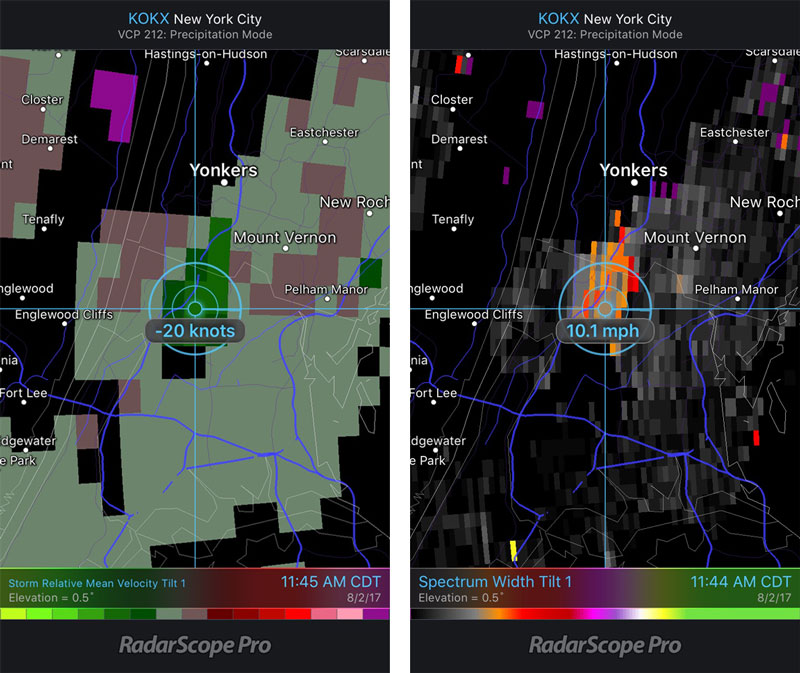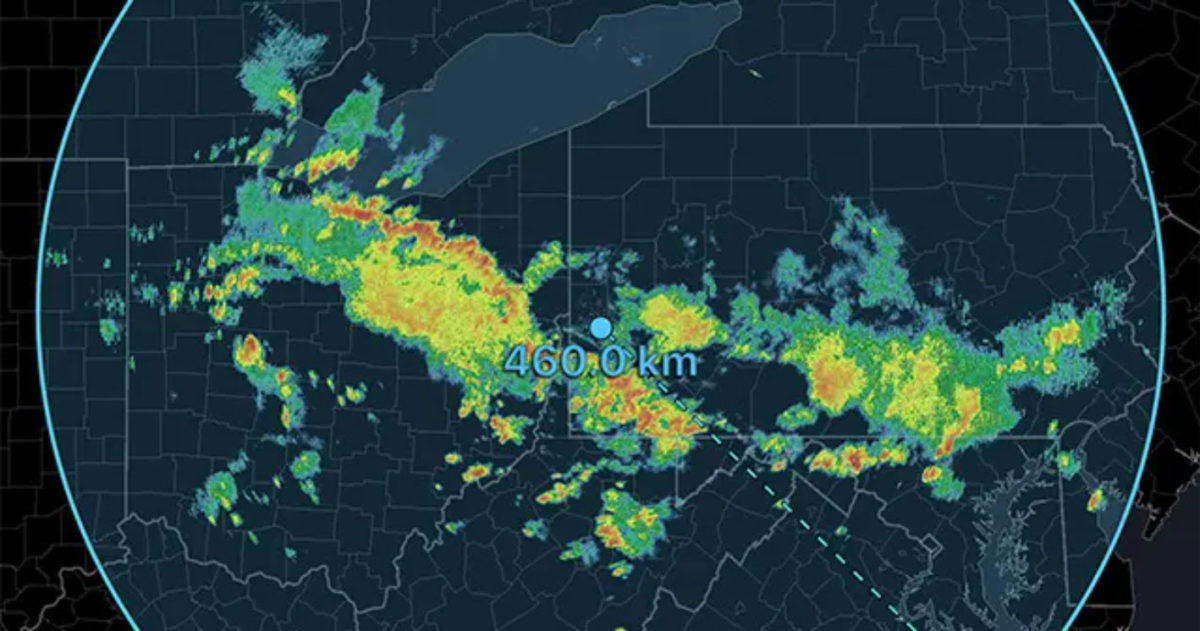The most recent release of RadarScope added Spectrum Width to the list of available products. While this product is not as well known as others, it can provide some important information about the features you see on the radar images.
Within any volume that is sampled by a radar, there can be a wide range of motions being observed. Spectrum Width is a measure of that variation. Higher values of Spectrum Width correlate to a wider range of velocities being observed; lower values indicate a narrower range. These values can provide information about weather conditions.

Some of the possible applications of Spectrum Width include identifying potential tornadoes, microbursts, and various boundaries. When the Spectrum Width is high in the vicinity of a rotation signature, it can give additional clues that a tornado might be developing or that there may be debris being lofted by a tornado. Microbursts are often of interest to aviation due to the hazards that they pose to aircraft. A high Spectrum Width in the vicinity of a weakening thunderstorm may indicate the potential for a microburst or turbulence not necessarily associated with a microburst. In some cases, the Spectrum Width can be used to more clearly identify a boundary, such as a front or outflow. Because there can be strong vertical motion ahead of a boundary, high values or a sharp change in Spectrum Width over a relatively short distance can highlight the location of the boundary.
 Below are two images from a microburst near New York City on August 2, 2017. The first image is the reflectivity image of the storm and the second is the Spectrum Width. Within this storm, winds are around 20 knots (23 mph) with Spectrum Width values around 10-13 mph. The Spectrum Width values suggest there is some variation in the winds being observed by the radar. Given the strong winds shown on the velocity image coupled with the Spectrum Width values, there are likely some stronger gusts within the volume being observed by the radar beam. If you’re flying through this storm, you’re likely to experience some turbulence. In the case of a tornado, it’s not uncommon to observe Spectrum Width values higher than 20 mph, especially near the tornado, indicating very strong turbulence. There is no limit to how high the Spectrum Width can be, however, if velocities are folded, there will be no Spectrum Width where the folding is occurring.
Below are two images from a microburst near New York City on August 2, 2017. The first image is the reflectivity image of the storm and the second is the Spectrum Width. Within this storm, winds are around 20 knots (23 mph) with Spectrum Width values around 10-13 mph. The Spectrum Width values suggest there is some variation in the winds being observed by the radar. Given the strong winds shown on the velocity image coupled with the Spectrum Width values, there are likely some stronger gusts within the volume being observed by the radar beam. If you’re flying through this storm, you’re likely to experience some turbulence. In the case of a tornado, it’s not uncommon to observe Spectrum Width values higher than 20 mph, especially near the tornado, indicating very strong turbulence. There is no limit to how high the Spectrum Width can be, however, if velocities are folded, there will be no Spectrum Width where the folding is occurring.
{{cta(‘7adc9887-5a2e-4a2c-90de-3d3a733f8912′,’justifycenter’)}}








